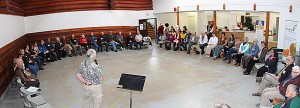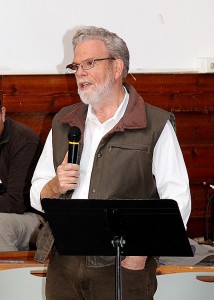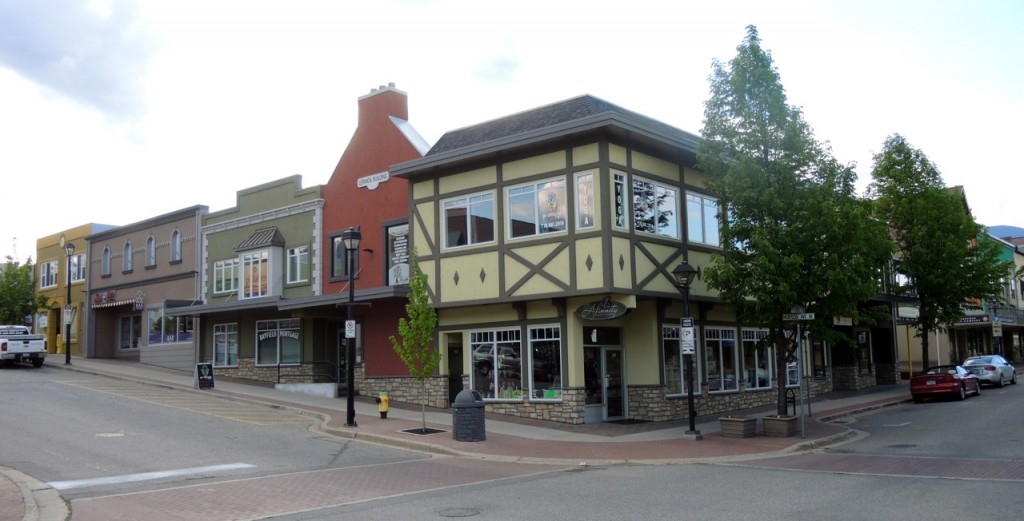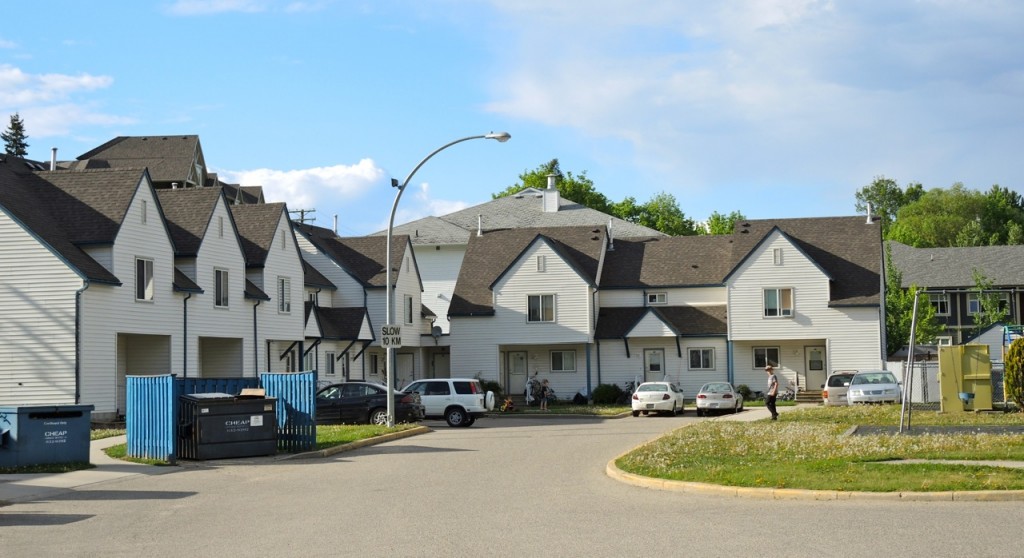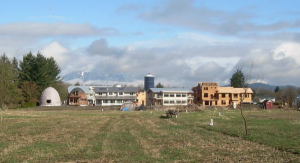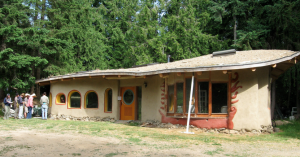Frank Bugala addresses the workshop group, photo by Fred Bird
Every year a group of key Shuswap “movers and shakers” come together under the auspices of the group Plan B:E to discuss sustainable options for improving the local economy by linking business, artistic and environmental values. This year the third “Respect Lives Here” workshop was held at the Adams Lake Indian Band’s Pierre’s Point Centre and was hosted by Band Chief Robin Billy.
 Chief Robin Billy, photo by Fred Bird
Chief Robin Billy, photo by Fred Bird
In his opening remarks, Billy reflected on Secwepemc history when they were all family with a participant democracy until they offered help to their European guests who then tried to eliminate them. He stressed the need to protect our water and to foster a green, sustainable economy. Neskonlith Chief Judy Wilson then added how the economy must change and that people need to live more simply, especially when considering how climate change is already happening.
Bill Laird, photo by Fred Bird
After each presentation by local business and community leaders, including Eric Bjorgan, David Askew, Bill Laird, Louise Wallace and Brian Ayotte, participants broke into small groups to brainstorm ideas generated by the questions posed by the speaker. The results were then summarized for the entire group. It was Bill Laird’s talk that created the greatest challenge for the group and sparked some dynamic conversations and interesting suggestions.
Salmon Arm core revitalization
Laird began by describing some of the choices he made in business and the positive effects these have had on the economy. For example, his efforts to salvage existing structures in the downtown core revitalization created new jobs and increased the tax base. However, the major problem he sees now with the local economy is the serious lack of adequate housing as evidenced by the vacancy rate that while listed at 2.5 percent is closer to zero.
The housing shortage makes it more difficult to develop a reliable workforce and thus limits growth in the community. While there are a number of low-income housing developments in Salmon Arm, they are always full. Plus, some tenants who now have larger incomes remain, despite the rules designed to help those who are struggling.
Rotary Gardens affordable housing
The economics for building new housing do not work for private developers, as the return on the costs is currently not sufficient to warrant the investment. As well, building codes make it more difficult to reduce building costs to build affordable housing. Laird added how we are fortunate to have a generous community with groups like the Shuswap Housing Society and the Rotary Club who have built successful projects and want to do more, but they first need land to build on.
Affordable housing on Shuswap Avenue built by the Mental Health Society
There were numerous solutions suggested by the participants. Key themes emerged including the need for smart designs, access to gardens, walkability, small footprint homes, and removing barriers to multiple family dwellings. One idea that really caught the attention of the group was the concept of agricultural villages, also known as eco-villages that combine co-housing with sustainable living.
Yarrow Ecovillage
There are currently two eco-villages in British Columbia, one in the Fraser Valley and one on Vancouver Island. Yarrow Ecovillage combines 33 residences with strata titles on 25 acres, a 3900 sq. foot common house, community gardens and three organic farms on 20 acres. There is also a seniors co-housing unit in the planning stage. 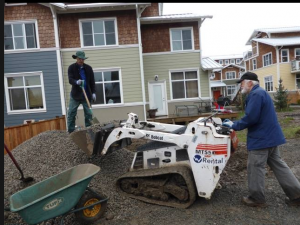 Members get to know their neighbours, enjoy fresh vegetables and appreciate the common area with its play room, craft room, music room, kitchen and eating area, wood shop and hot tub and sauna.
Members get to know their neighbours, enjoy fresh vegetables and appreciate the common area with its play room, craft room, music room, kitchen and eating area, wood shop and hot tub and sauna.
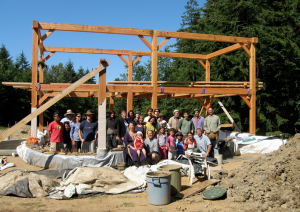 O.U.R. Ecovillage is a sustainable, learning community on 25 acres at Shawnigan Lake based on permaculture principles including natural building techniques and sustainable food production. In addition to the off-grid cluster of nine eco-homes there is a Bed and Breakfast, an organic production farm and a third of the property is protected with a conservation covenant. This village uses a cooperative, hybrid ownership model.
O.U.R. Ecovillage is a sustainable, learning community on 25 acres at Shawnigan Lake based on permaculture principles including natural building techniques and sustainable food production. In addition to the off-grid cluster of nine eco-homes there is a Bed and Breakfast, an organic production farm and a third of the property is protected with a conservation covenant. This village uses a cooperative, hybrid ownership model.
Natural building techniques are used at the O.U.R. Ecovillage
Salmon Arm would be an ideal community for eco-villages, with its large amount of farmland within the city limits. According to Laird, only half of the agricultural land is currently being utilized. There are many restrictions to establishing eco-villages however, including the existing zoning regulations and the Agricultural Land Reserve limits to housing. However, there could be a number of suitable locations where there are properties that include both land in and out of the ALR.
Co-housing is another viable solution where residents share common areas creating sustainable communities that are more economical. There are now 15 co-housing sites in B.C. that vary in size from 11 homes in Nelson to 36 in Courtney. Some have condominium or townhome designs and others have separate houses. All of these ideas would work well in the Shuswap, and as Laird emphasized Salmon Arm could be a leader, but first there is a need for a vision.
POSTSCRIPT
The city needs to works with local organizations to establish a taskforce that could find ways to build more affordable housing for the community. Money for projects could come from the new federal government’s infrastructure funds. As well, the provincial government needs to work with the Agricultural Land Reserve to amend the regulations to allow the construction of eco-villages on farms. It would also be great to see some co-housing units established that could reduce the costs for residents and provide a friendly environment for families and seniors.
